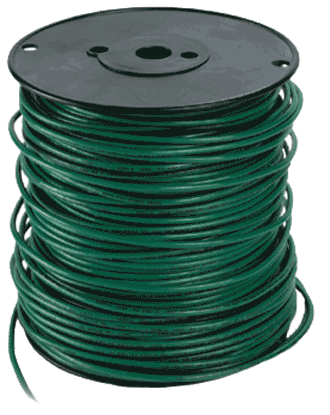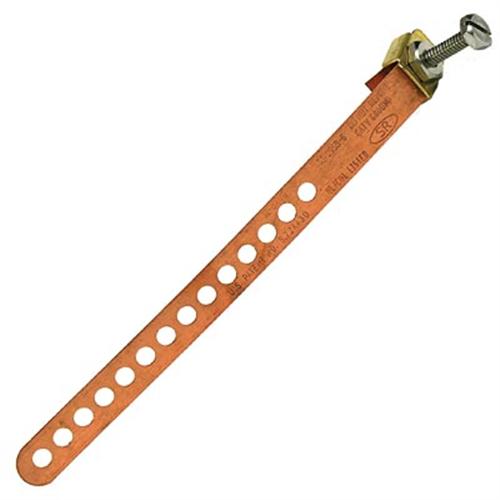Big disclaimer: Grounding rules vary from city to city. Don’t just read this site, actually go to city hall and get the rules.
Adding a TV antenna to your home is one of the easiest ways to get free TV and make your whole entertainment experience better. With an antenna, there’s nothing to buy after the initial purchase. You can get dozens of channels of live entertainment and most of them aren’t available on cable or satellite. I think it’s a must-have accessory.
However, I’ve said it before: proper grounding is critical. Grounding is the process where the metal bits on the outside of your home connect to the ground (literally, the earth, the dirt, etc.) so that they aren’t lightning hazards. It’s an incredibly important part of any home theater installation. It’s not always clear how you should ground an antenna, so here’s a quick guide
The good news here is that indoor antennas do not need additional grounding. Most indoor home theater equipment is not grounded (or bonded, the proper term for connecting to a whole-house ground system) because grounding can introduce interference into the picture and sound. If you’ve ever heard a low buzz from an audio system it’s usually due to grounding.
There is of course some minimal risk to having your home theater gear ungrounded. Homes have three prong outlets so that appliances can be bonded properly. However, the odds of lightning finding your TV or AV receiver are so slim that it isn’t worth worrying about.
Any piece of metal mounted outdoors should be grounded. That’s ANY piece of metal. By the way this also applies to any antenna shrouded in plastic. Just because it looks like there isn’t any metal doesn’t mean there isn’t. EVERY antenna has a metal part so every outdoor antenna needs to be grounded.
I recommend that every antenna be grounded twice, actually. First, ground the antenna and second ground the mast. Most people don’t go to the extra trouble of grounding the mast and some people will tell you it’s not necessary. I say, it’s a precaution that’s worth taking.

Grounding the antenna is fairly easy if you use the right tools. Start with using RG6 cable with a solid copper center conductor. Don’t just pick up cheap cable at the home store because it won’t work as well. Run the cable to a ground block (pictured at the top of this article.) The ground block is there to provide a connection point for grounding wire. Always use wire designed for grounding. Technically any copper wire would do but ground wire is designed for this purpose and its green sheath will tell anyone who looks what it is.
If you don’t want to use a ground block you can connect the ground wire straight to any metal part of the antenna but make sure it’s very secure and not likely to come off. There are some antennas that have grounding screws on them but very few.
As I said a lot of people don’t go to the trouble of grounding the mast separately and I know some folks will say you don’t have to, that it’s a waste of money. I don’t know, I just feel better knowing the mast is grounded. It’s a big piece of metal on its own so why not do it.
Just because your antenna is grounded doesn’t mean the mast is grounded. In fact the antenna itself is always going to be isolated from the mast in a proper installation.
There are a couple of options for grounding a mast. If there is a ground screw on it or on the mount, you can attach a ground screw to it. Otherwise you have to find another way to attach the ground wire. You can drill a hole and put a screw in, or loop the ground wire through a pre-existing hole. If you’re really industrious you can solder the ground wire to the mast, but even I think that’s a little bit of overkill. The whole point is to make sure the wire is connected metal-on-metal and that it isn’t going anywhere.
It’s not enough to just wrap the ground wire around or use duct tape. Also if the mast or mount has any paint or coating on it make sure to scrape that off so you’re metal-on-metal.
Here’s where it gets just a little dicey. Cities and towns all have different ordinances for grounding. Some will let you attach the wire to a cold water pipe. Others will let you connect it to the outside breaker box, and some cities require a direct connection using a ground rod.

The type of connection hardware also varies. If your city lets you do it, a ground strap is an easy way to form a connection between your ground wire and something else. Like I said though, you need to go to city hall to get the proper rules for your area or consult an electrician who is used to working in your area.
Grounding isn’t glamorous. It’s going to mean more unsightly wires on the side of the house. And, it’s not the cheapest thing in the world. I get that. But believe me, it’s a lot better than burning your house down. If you were “on the fence” about grounding before, please please ground your antenna.
If you want to know more about the grounding supplies you can find at Solid Signal, call us at 888-233-7563 or fill out the form below!
The post What is the best way to ground an antenna? appeared first on The Solid Signal Blog.
Continue reading...
Adding a TV antenna to your home is one of the easiest ways to get free TV and make your whole entertainment experience better. With an antenna, there’s nothing to buy after the initial purchase. You can get dozens of channels of live entertainment and most of them aren’t available on cable or satellite. I think it’s a must-have accessory.
However, I’ve said it before: proper grounding is critical. Grounding is the process where the metal bits on the outside of your home connect to the ground (literally, the earth, the dirt, etc.) so that they aren’t lightning hazards. It’s an incredibly important part of any home theater installation. It’s not always clear how you should ground an antenna, so here’s a quick guide
Indoor antennas
The good news here is that indoor antennas do not need additional grounding. Most indoor home theater equipment is not grounded (or bonded, the proper term for connecting to a whole-house ground system) because grounding can introduce interference into the picture and sound. If you’ve ever heard a low buzz from an audio system it’s usually due to grounding.
There is of course some minimal risk to having your home theater gear ungrounded. Homes have three prong outlets so that appliances can be bonded properly. However, the odds of lightning finding your TV or AV receiver are so slim that it isn’t worth worrying about.
Outdoor antennas
Any piece of metal mounted outdoors should be grounded. That’s ANY piece of metal. By the way this also applies to any antenna shrouded in plastic. Just because it looks like there isn’t any metal doesn’t mean there isn’t. EVERY antenna has a metal part so every outdoor antenna needs to be grounded.
I recommend that every antenna be grounded twice, actually. First, ground the antenna and second ground the mast. Most people don’t go to the extra trouble of grounding the mast and some people will tell you it’s not necessary. I say, it’s a precaution that’s worth taking.

How to ground the antenna
Grounding the antenna is fairly easy if you use the right tools. Start with using RG6 cable with a solid copper center conductor. Don’t just pick up cheap cable at the home store because it won’t work as well. Run the cable to a ground block (pictured at the top of this article.) The ground block is there to provide a connection point for grounding wire. Always use wire designed for grounding. Technically any copper wire would do but ground wire is designed for this purpose and its green sheath will tell anyone who looks what it is.
If you don’t want to use a ground block you can connect the ground wire straight to any metal part of the antenna but make sure it’s very secure and not likely to come off. There are some antennas that have grounding screws on them but very few.
How to ground the mast
As I said a lot of people don’t go to the trouble of grounding the mast separately and I know some folks will say you don’t have to, that it’s a waste of money. I don’t know, I just feel better knowing the mast is grounded. It’s a big piece of metal on its own so why not do it.
Just because your antenna is grounded doesn’t mean the mast is grounded. In fact the antenna itself is always going to be isolated from the mast in a proper installation.
There are a couple of options for grounding a mast. If there is a ground screw on it or on the mount, you can attach a ground screw to it. Otherwise you have to find another way to attach the ground wire. You can drill a hole and put a screw in, or loop the ground wire through a pre-existing hole. If you’re really industrious you can solder the ground wire to the mast, but even I think that’s a little bit of overkill. The whole point is to make sure the wire is connected metal-on-metal and that it isn’t going anywhere.
It’s not enough to just wrap the ground wire around or use duct tape. Also if the mast or mount has any paint or coating on it make sure to scrape that off so you’re metal-on-metal.
Where to attach the other side of the ground wire
Here’s where it gets just a little dicey. Cities and towns all have different ordinances for grounding. Some will let you attach the wire to a cold water pipe. Others will let you connect it to the outside breaker box, and some cities require a direct connection using a ground rod.

The type of connection hardware also varies. If your city lets you do it, a ground strap is an easy way to form a connection between your ground wire and something else. Like I said though, you need to go to city hall to get the proper rules for your area or consult an electrician who is used to working in your area.
It’s a pain, but it’s worth it
Grounding isn’t glamorous. It’s going to mean more unsightly wires on the side of the house. And, it’s not the cheapest thing in the world. I get that. But believe me, it’s a lot better than burning your house down. If you were “on the fence” about grounding before, please please ground your antenna.
If you want to know more about the grounding supplies you can find at Solid Signal, call us at 888-233-7563 or fill out the form below!
The post What is the best way to ground an antenna? appeared first on The Solid Signal Blog.
Continue reading...

